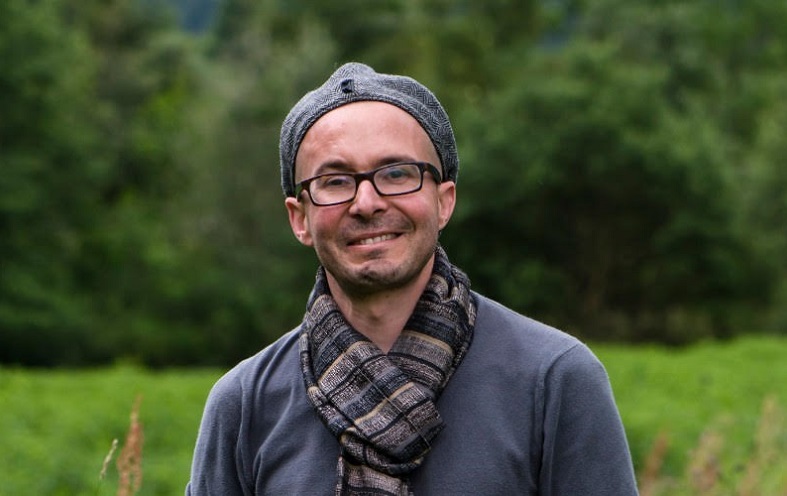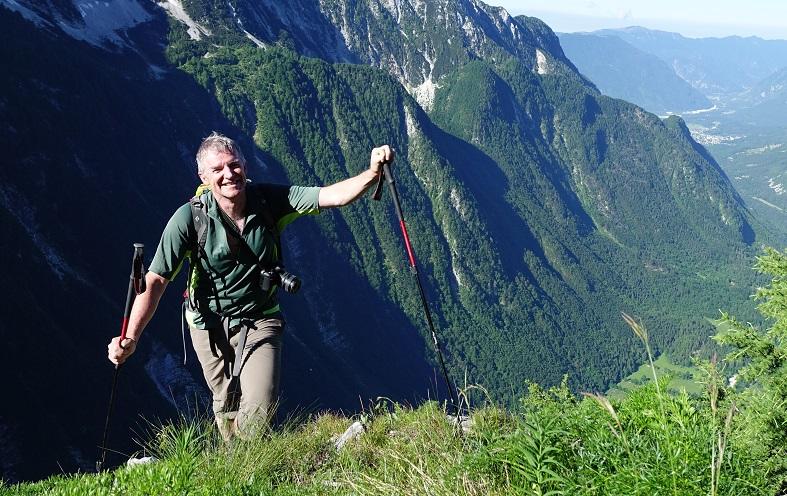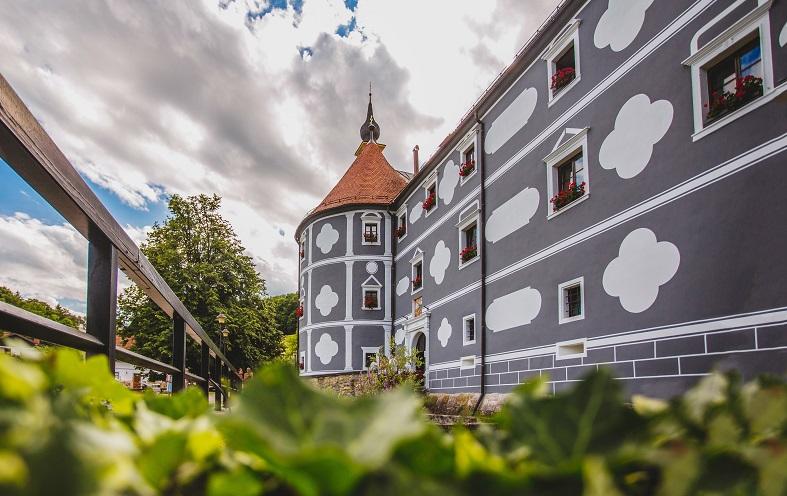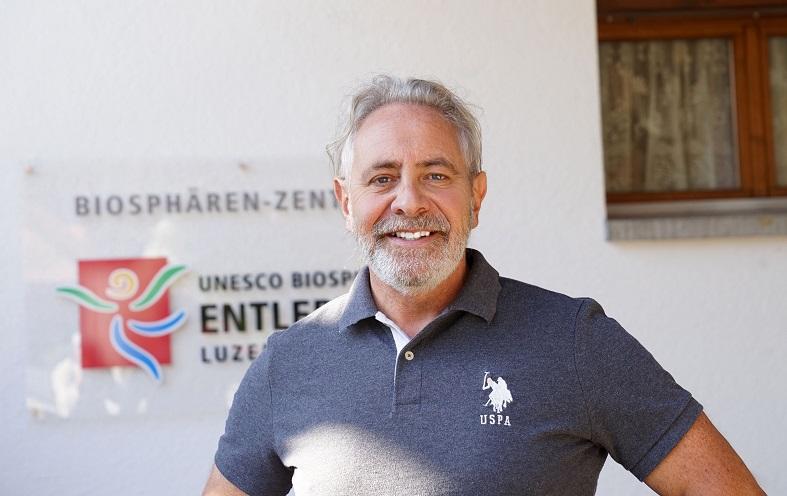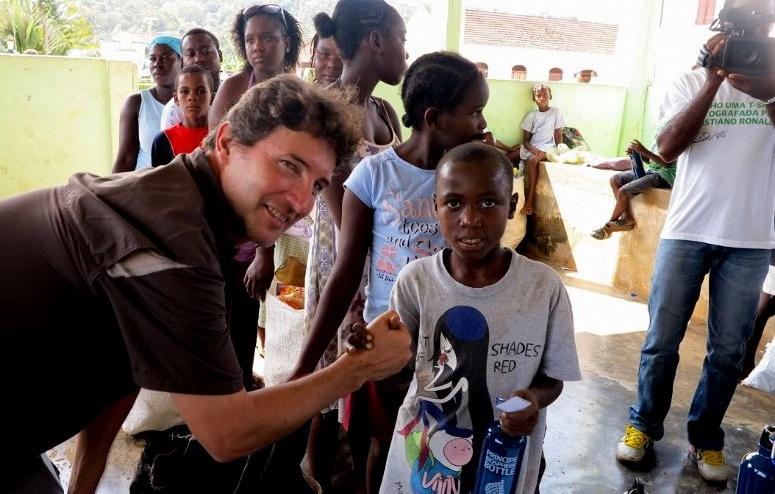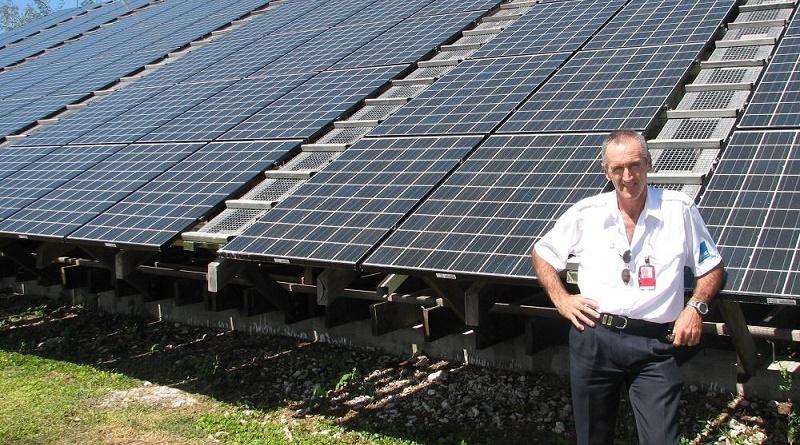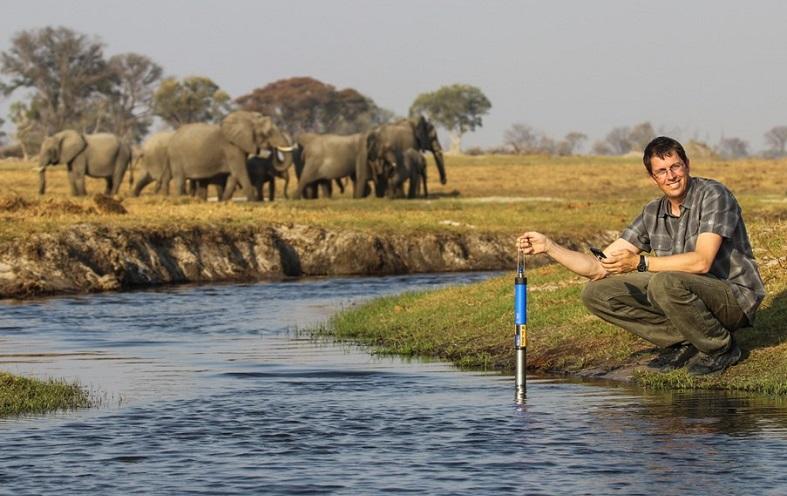
Protecting the Earth’s ecosystem is the need of the hour, especially in the Okavango River Basin. It is home to rich biodiversity and a lifeline for millions in southern Africa.
In this interview, Kai Collins, Director of the National Geographic Okavango Wilderness Project, talks about strengthening the resiliency of the local communities to conserve the delicate biodiversity of the region. He discusses the significance of empowering communities with a steady source of income through employment in community-based alternative livelihoods, like tourism, to curb the dependency of this vulnerable population on wildlife to make a living. Kai also highlights the need for cooperation among tourism companies to work together towards helping local communities and conservation and be carbon positive.
Kai, your immense passion for wildlife is evident in the work you do. What inspired you to dedicate your career to the conservation of wildlife and the environment?
I was incredibly fortunate to grow up in a remote rural village with abundant wildlife around, so from an early age, I had a great appreciation and fascination for the natural world. From 7 years old I was fairly convinced that being a game park manager or safari guide was pretty much a dream job and that eventually resulted in me getting my Master’s degree in conservation biology and dedicating my life to the conservation of the last wild places and critical ecosystems that sustain us – pristine wilderness is quite simply ‘good for the soul’ and brings us back into the present, where we really should be spending most of our time!
How has the ‘high price, low impact’ tourism model helped Botswana in its conservation efforts? Can it be easily replicated in other destinations around the world?
The high price, low impact model has enabled Botswana to keep the impacts of tourism extremely minimal in pristine wildlife areas like the sensitive wetlands of the Okavango Delta. The model only works where you can create a market that supports it, so significant demand for a very unique product. Having tourists willing to pay significant amounts to stay in small exclusive camps means you can hire a lot more staff to the number of guests.
The high-end ‘Premier’ type lodges often have a staff-to-guest ratio of 3-5 staff per guest or even higher, whereas normal hotels can have a staff-to-guest ratio more than 10 times lower. So the model allows for significant employment and job creation opportunities whilst keeping the impact low as you don’t have many guest rooms, so fewer vehicles, fewer boats and hence less impact on pristine wetland environments.
At the other end of the scale, the Okavango Delta also has many campsites that are basic but accessible to us citizens at significantly reduced rates, and there are also a lot of mobile safaris operators that follow the lower-cost model. But ‘developing’ the Okavango Delta with tar roads and bridges etc to allow mass tourism access would have had severe negative impacts on this extremely sensitive system.
Keeping bed numbers low in core pristine wetland areas means that it is very costly to operate there as when the floodwaters come up you need to fly in all your supplies as well as staff in and out at incredible cost but the high-cost model makes this possible, keeping impacts at an absolute minimum.
The ‘high price, low impact’ tourism model can certainly be replicated in other destinations but it takes time to build up the demand and awareness around a particular product. One of the main reasons people are willing to pay the higher cost is for the exclusivity – you need to be able to offer pure wilderness experiences without seeing large numbers of other vehicles and the associated impacts.
The absence of international tourism this year due to the coronavirus outbreak has put decades worth of conservation and sustainability efforts at risk. How are African countries which are dependent on tourism income dealing with the current crisis?
Many African countries’ economies have not yet managed to diversify significantly and the current economic crisis has significantly reduced budgets. Combined with the collapse of tourism revenues many protected areas are struggling to remain operational. Currently, countries are trying to support the most in need, having large populations in poverty means they do not have the resilience to ride out lockdowns and economic downturns in the same way that many developed countries can, so a different approach is required on this continent.
Countries are also doing their best to support struggling small businesses and maintain jobs across the entire employment sector but it has also become clear that many conservation and sustainability efforts were heavily reliant on tourism incomes. Trying to find alternative funding mechanisms is now critical to build more resilience in terms of funding streams.
The current situation of the pandemic also represents an opportunity for protected areas, as they can recover operational financing sources, to focus on supporting rural community stakeholders as custodians of the wildlife and landscapes that tourism depends on. Having surrounding communities more resilient will reduce their reliance on illegal activities during times of financial difficulty.
The National Geographic Okavango Wilderness Project (NGOWP) has embarked on multiple expeditions to gather data to be able to map the Okavango River Basin area. Can you share how this data is helping to preserve the river basin?
Due to the impacts of decades-long wars in Angola leaving behind a gruesome legacy of landmines scattered across the country, vast areas of the upper catchments of the Okavango, Kwando and Zambezi rivers were not explored and surveyed by scientists, resulting in massive gaps in global biodiversity datasets until relatively recently.
The National Geographic Okavango Wilderness Project, led by Steve Boyes which he founded in 2015 has had teams exploring and scientifically surveying all major rivers in the upper reaches of the Okavango and Kwando River Basins in south-east Angola, as well as the Okavango Delta in Botswana over the past five years. These scientific river expeditions have accumulated more than 7,500km of baseline transect data recorded from dug-out canoes or “mekoro”. Land-based survey teams on mountain bikes, motorbikes, vehicles and on foot have also explored and documented tens of thousands of square kilometres of the upper watersheds of these mighty rivers. On each of these expeditions, a wide variety of experts were brought along to sample and study these extremely remote and hard to access areas, adding to the knowledge and understanding of these last pristine wild places and the communities that live in harmony with them.
All these expeditions focus on getting scientific experts out to these extremely remote parts of Angola to document the unique biodiversity and endemism there. And that is all contributing to the pool of knowledge assisting the Angolan government and local communities to prioritise community conservation efforts in the most crucial areas.
Another really important aspect of monitoring data for conserving critical wetlands is long-term monitoring datasets that show changes over time, enabling negative impacts to be detected early on so that mitigation measures can be put in place swiftly. The project has also been conducting annual biodiversity surveys across the length of the Okavango Delta for the past 10 years, and this dataset provides a crucial baseline across varying rainfall and climatic conditions that enable the detection of change – and being able to mitigate that change where it is a negative change induced by human activity.
We now understand the unique value of the upper catchments of the Okavango and Zambezi Rivers in the Angolan highlands in terms of providing ecosystem services to local communities and downstream users in the Kavango Zambezi Transfrontier Conservation Area (KAZA). The next phase of the project is partnering with local communities, the Angolan Government, research institutions, donors and local and international NGOs towards ensuring the protection of these ecosystem services into the future, as well as increasing the resilience of local communities that rely on these ecosystem services for their survival.
Which parts of your work would you consider the most difficult? Which are the main hurdles in day to day conservation business?
One of the most significant challenges is trying to match up very long-term community-based conservation initiatives with much shorter political term timelines and even shorter donor funding cycles.
Also, it is critical that community conservation does not become politicised. It is always a challenge to keep partisan politics from interfering in critically important long-term initiatives. The only way to overcome these hurdles is patience, patience and more patience, along with a good sense of humour and lashings of optimism.
The National Geographic Society has joined the Wyss Campaign for Nature with the goal being ‘to help conserve 30 per cent of the planet in a natural state by 2030’. Can you give some background on the Campaign for Nature?
With the current global conservation challenges, it is critical that we start to work at a global scale and the Campaign for Nature is doing just that.
As outlined on their website: “The Campaign for Nature is a partnership of the Wyss Campaign for Nature, National Geographic Society, and works with scientists, Indigenous Peoples and a growing coalition of more than 100 conservation organizations around the world that is calling on policymakers to commit to a science-driven, ambitious new deal for nature at the 15th meeting of the Conference of the Parties to the Convention on Biological Diversity in Kunming, China in 2021. Specifically, the Campaign for Nature is calling on world leaders to:
- commit to protecting at least 30% of the planet by 2030;
- help mobilize financial resources to ensure protected areas are properly managed; and,
- approach biodiversity conservation in a way that fully integrates and respects indigenous leadership and indigenous rights.”
The science-based proposal to protect at least 30% of the planet’s lands and seas by 2030 is now the United Nations’ draft target for area-based conservation in the Convention on Biodiversity’s post-2020 global framework. This 30×30 proposal is one of the leading nature-based solutions with strong backing globally. Over 50 countries from every continent have joined forces to form an interregional group called the High Ambition Coalition for Nature and People (HAC) that seeks a global agreement to protect at least 30% of the planet’s land and oceans by 2030. France, the President of Cop21 and the UK, President of COP26 are Co-chairs of the HAC with Costa Rica, working alongside dozens of other countries.
Climate change and biodiversity loss are two sides of the same global crisis and it is critical that we start to coordinate conservation at a global scale. Tom Lovejoy quotes: “This is the level of ambition we need because this is the last chance to secure a functional living planet for people and other forms of life.”
We need to work towards a planet in balance where people, economies, nature and all species thrive.
Climate change is inevitable and with reduced rainfall and drought, the future of the Okavango catchment is under dire threat. What is the future of the biodiversity of the Okavango River Basin and its people if humanity cannot stop or reverse the climate crisis?
At this point, I think it’s less about stopping or reversing it than being able to steer it towards a less catastrophic endpoint. With our focus on building capacity in local communities to sustainably manage their natural resources, conserve ecosystem services and build resilience to potential climate change impacts, the majority of biodiversity can be conserved for future generations.
We need to think beyond just reducing emissions towards carbon neutrality: we need to go carbon positive – we need to all start planting massive amounts of trees! Its actually quite fun, rewarding and counts as exercise.
How do you measure and monitor the success of your conservation efforts?
When both communities and governments can understand the critical importance of ecosystem services provided by intact natural systems and wilderness areas, particularly forests, rivers and wetland systems, and can play an active and collaborative role in managing and protecting those resources together equitably and sustainably – then any achievements along this path are a sign of success!
Essentially you are winning in conservation if you have equitable local community engagement and buy-in, as well as a financially sustainable business model for long-term conservation implementation with communities being key partners in sustainably managing their natural resources.
Which achievements are you most proud of at the National Geographic Okavango Wilderness Project so far?
Although I have only been involved with the project for the past two years, I’ve been following it closely since its inception by Steve Boyes five years ago and what has been amazing to witness is how the project has evolved from initial scientific exploration to now supporting community-based natural resource management on the ground with a commitment of more than 10 years from various key stakeholders and partners.
The Project’s vision is to safeguard the life-giving water flowing into the Okavango and Zambezi rivers from Angola through equitable partnerships.
The mission is to support the development of a vibrant conservation economy via the establishment of a network of conservation areas within the Lisima landscape, including the Okavango-Zambezi Water Tower, which connects the headwaters and source lakes of four major rivers in Angola with the Okavango Delta and the Zambezi River. Intended outcomes include delivering water security, socio-economic development, biodiversity conservation and enhanced climate change resilience.
Through partnerships with governments, local communities, NGOs and the private sector, the project intents to support the establishment of a sustainable, vibrant and community-driven “conservation economy” founded on the principles of upholding traditional knowledge systems and land rights, optimising sustainable traditional and alternative livelihoods, and developing community-owned ecotourism enterprises within the project area.
The most critical thing is that the Okavango Wilderness Project is taking its lead from local communities. This is critical for long term sustainability of any activities within a landscape. There is continual engagement with local communities, starting with carrying out basic needs assessments, discussing alternative livelihood options, sustainable development trajectories and conservation economy opportunities with a focus on preserving cultural heritage alongside the long term conservation of the ecosystem services that sustain them.
Some of the historic achievements:
Since 2015, five research expeditions have traversed the full-lengths of all major rivers in the Water Tower, covering over 7,500 kilometres of detailed research transects using dug-out canoes, fat-tyre mountain bikes, motorcycles, and on foot.
Since 2016, five large-scale land-based expeditions have conducted detailed biodiversity, environmental and socio-economic surveys, spanning over 60,000 square kilometres.
We now have hosted over 60 top scientists rediscovering this vast, post-war wilderness with unexplored source lakes, waterfalls, peatlands, and what is now recognised as Africa’s largest unfragmented piece of Miombo woodland.
We have discovered 50 new species to science (published) and over 82 new species currently being described, over 140 new species for Angola, and hundreds of species not known to occur there, including endangered species like Cheetah and African Wild Dog.
Ongoing monitoring and research across the basin, and use of dedicated research camps in the Delta.
How has your view on tourism and conservation changed over time?
Going forward it has become clear that many tourism companies need to work more closely together. Whilst it is important to have some healthy competition, it is also important that there is a collaboration between ‘competitors’ towards common goals to maximise benefits – specifically to local communities and conservation.
This collaboration will be crucial going forward, to help protect the tourism industry from being so severely impacted by global crises, such as the COVID-19 global pandemic. Increasing the resilience of the tourism industry through collaboration will result in less severe impacts on local communities and conservation in the future.
Anything else you’d like to mention?
Get away from your phones and computers more often! Avoid spending so much time focusing on toxic social media and negative news stories. Step outside and breath fresh air, gaze in awe at majestic trees and marvel at the wonder and delicacy of the natural world – it will keep you happier, you will smile more often, that will help other people be more positive and the world will be a better place!
Thank you, Kai.
Connect with Kai Collins on LinkedIn and follow his journey in the wilderness on Instagram. Find out more about the incredible work done by the project team to preserve the greater Okavango Basin here.
More stories of conservation and sustainable tourism champions in Africa
Enjoyed our interview with Kai Collins on the need for a community-driven conservation approach to protecting the pristine ecosystem of the Okavango Delta? Thanks for sharing!

